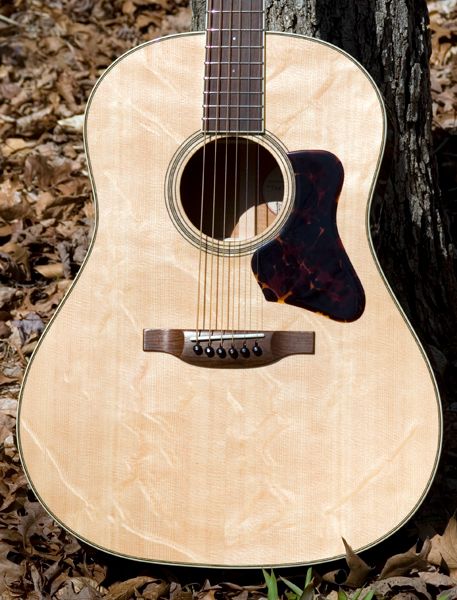guildzilla
Senior Member
Interesting thread. I wasn't aware there had been a shift in thinking about bear claw tops, at least sitka spruce bear claw tops. I once had a discussion with my luthier on the subject. His primary pleasure is building violins and he considers bear claw figuring to be a prime indicator of tone wood quality for a violin or guitar.
While I'm no expert, what I've noticed about Guild acoustics from 1980 and onward is that the Westerly guitars with a Chesterfield inlay - the mid-level models such as F-212's, JF-30-12's, DV-52's, etc. - very frequently have tops with a little or a lot of bear claw figure.
The G-shield acoustics - F-512's and F-412's, D-55's, GF-60's and F-50's - seem to have sitka tops that were selected to exclude this figuring.
However, on the entry level guitars - D-4's, D-25's, etc - I think you also seldom see a top with bear claw figure.
Whether it's a pattern or not, it leads me to speculate that Guild's take was that the bear claw tops were too nice to use on the entry level guitars but not perfect enough to use on the top line guitars.
From a personal taste perspective, when a top only has one to several bear claw "slashes," it can look a little out of place, IMO. But, to me, even those tops have sounded a cut above the norm. When a top has a lot of bear claw, it looks very cool indeed. My '81 F-212XL has gorgeous and abundant bear claw figure, as well as remarkably tight grain. And it sounds as great as it looks.
No offense intended, Tony. I certainly agree with your observation that what was considered great wood in the 80's would not have been considered great wood in the 60's. I have the same bias.
While I'm no expert, what I've noticed about Guild acoustics from 1980 and onward is that the Westerly guitars with a Chesterfield inlay - the mid-level models such as F-212's, JF-30-12's, DV-52's, etc. - very frequently have tops with a little or a lot of bear claw figure.
The G-shield acoustics - F-512's and F-412's, D-55's, GF-60's and F-50's - seem to have sitka tops that were selected to exclude this figuring.
However, on the entry level guitars - D-4's, D-25's, etc - I think you also seldom see a top with bear claw figure.
Whether it's a pattern or not, it leads me to speculate that Guild's take was that the bear claw tops were too nice to use on the entry level guitars but not perfect enough to use on the top line guitars.
From a personal taste perspective, when a top only has one to several bear claw "slashes," it can look a little out of place, IMO. But, to me, even those tops have sounded a cut above the norm. When a top has a lot of bear claw, it looks very cool indeed. My '81 F-212XL has gorgeous and abundant bear claw figure, as well as remarkably tight grain. And it sounds as great as it looks.
No offense intended, Tony. I certainly agree with your observation that what was considered great wood in the 80's would not have been considered great wood in the 60's. I have the same bias.


